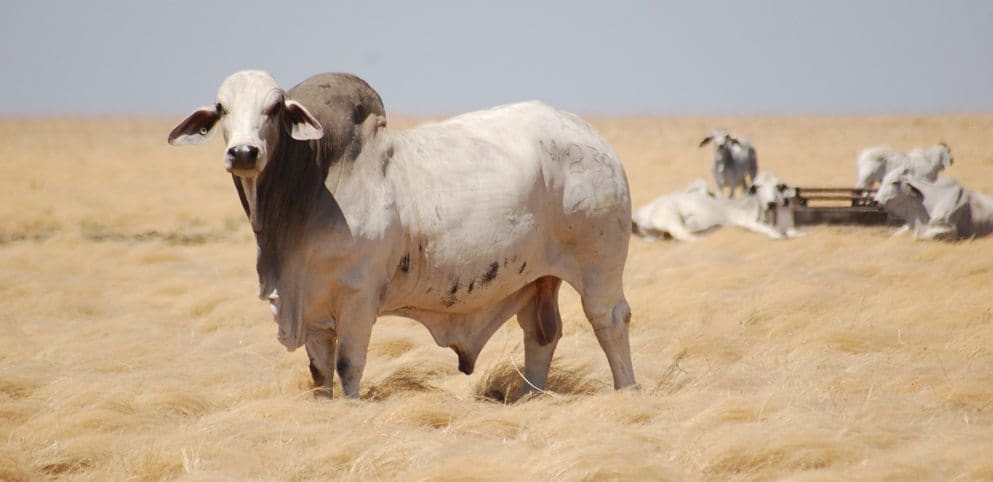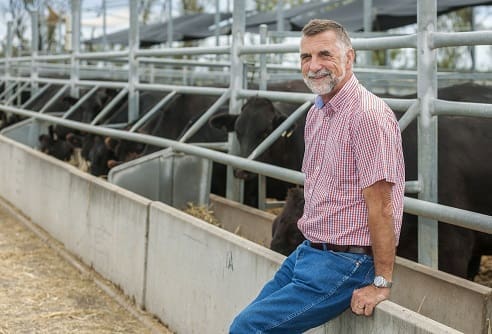
INHOSPITABLE environments, ticks, parasites and heat… it takes a careful mix of ancestry and breeding for a cattle industry to thrive in Australia’s far north. Now, genome studies are creating opportunities to lift the industry’s productivity.
The Brahman cattle breed favoured in Australia’s northern regions only survive there because of their special ancestry and genetics.
It is a harsh environment for cattle, with heat, ticks, sparse pasture, parasites and disease proving much too challenging for the Bos Taurus breeds that sustain important industries in Australia’s more temperate south.
To acquire their adaptation to tropical conditions, however, the progenitor of modern Brahman breeds incurred productivity penalties. This is reflected today in genetic traits that reduce fertility and meat quality compared with temperate breeds.
Stamped into the Brahman genome, therefore, is a unique balance of adaptation and productivity-penalty traits. It took evolution, domestication and concerted breeding to achieve that balance. But it amounts to a benefit-cost equation that limits the value of the northern beef industry, even as it made that industry possible.
Now, genome specialist Professor Stephen Moore of the Queensland Alliance for Agriculture and Food Innovation, thinks it is possible to rejig the genetic scales.
“We are seeing genome studies produce novel opportunities to rapidly and efficiently bump up the productivity of Brahman herds while retaining their formidable adaptations,” he said.

Professor Steve Moore
A mosaic of ancestry and breeding
En route to decoupling productivity penalties and adaptation traits, Professor Moore first had to sequence, assemble and then decipher the functional structure of the Brahman genome.
Sequencing a genome alone produces little in the way of useful information. It amounts to a description written in the ‘nucleic acid’ language of the genetic code.
To acquire meaning, DNA sequence is used as a reference point to compare and contrast the genetics of animals on a spectrum of functional characteristics, reflecting the genetic diversity of a population.
Only then does the genome reveal subtle sequence differences that make it possible to improve the performance of important animal traits.
For the Brahman cattle project, it took one rigorously compiled ‘reference sequence’ and comparisons with 50 additional genomes to achieve a breakthrough. A further 100 genomes have already been sequenced and another 100 are in the pipeline, with QAAFI’s Professor Ben Hayes adding to the power of the QAAFI study with input from his 1000 bull genome project.
Included in the analysis was DNA from the Australian bulls that most influenced the genetics of Australia’s Brahman herds. Thanks to the foresight of the late Dr Brian Burns, semen samples of top bulls dating back to the 1950s were preserved, allowing Professor Moore to analyse the cattle’s historical pedigree.
Revealed is a genome that is a mosaic of DNA from different ancestral sources. Clearly visible is the bones of the Bos indicus genome – the subspecies that was domesticated in the Indus Valley of Pakistan some 6000 years ago and gave rise to tropically adapted cattle.
However, there is also a small mosaic of DNA from Bos taurus – the subspecies domesticated in Iraq that is responsible for highly productive European cattle breeds.
Of particular interest were ‘fixed genetic differences’, meaning mosaics of DNA that are inherited together in a population and are exclusive to a breed. This indicates DNA that is essential to that breed’s core characteristics.
As the resolution improves, the genetic basis of both the adaptation and the productivity-penalty traits is coming into focus.
The information is so detailed that a new, highly targeted way of breeding becomes possible. Professor Moore’s goal is to use the genome information directly to predict which parents are needed to create bulls that can sire a more productive Brahman herd while retaining their hardy adaptations.
However, to make the desired genetic gain requires a starting gene pool that contains lots of genetic diversity.
Fortunately for the northern cattle industry, the ancestry of Brahmans herds has provided the researchers with all the diversity they need.
Ancestry matters
Normally, domestication and breeding programs narrow an animal’s gene pool, with the narrowing making additional genetic gain difficult. Fortunately, that is not the case for Brahman cattle due to their unusual ancestry.
They originate in four breeds of B. indicus bulls and cows that were imported to Texas in the US starting in 1854. Extensive crossing then mixed together these gene pools to produce American Brahman cattle.
From the 1930s onward – but accelerating from the 1950s – American Brahmans were imported to Australia where they were found to cope well in the tropical north where they created a new cattle industry.
With them came the widened genetic diversity that is the grist for successful breeding programs.
“What we are learning from this genome work is that lots of improvement is possible for tropically adapted cattle,” Professor Moore said. “Using genomic prediction techniques, we can make that gain with unprecedented efficiency, translating it into a more profitable, yet resilient, northern livestock industry.”
Source: The Queensland Alliance for Agriculture and Food Innovation. QAAFI is a research institute of The University of Queensland, supported by the Queensland Department of Agriculture and Fisheries.
